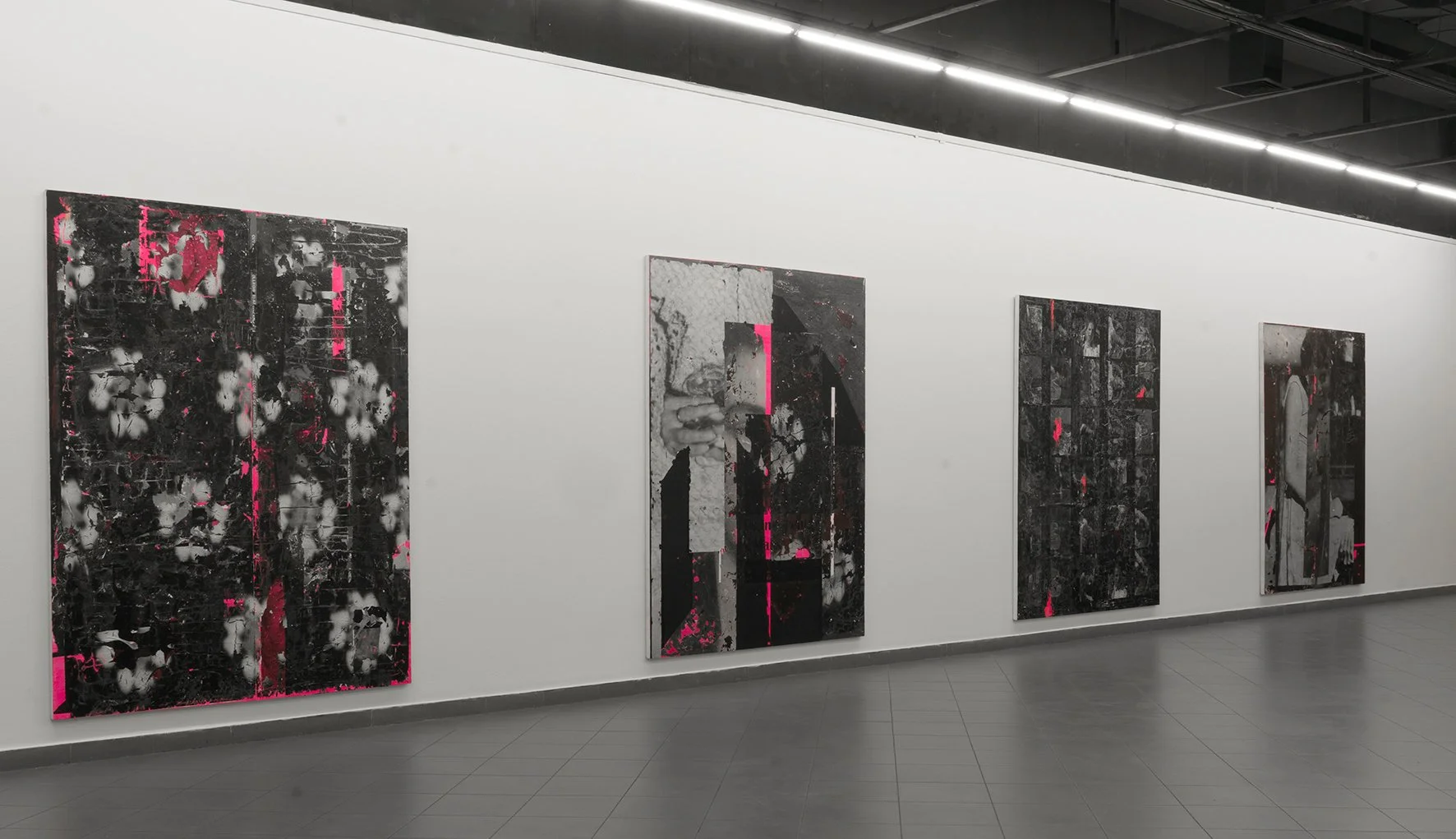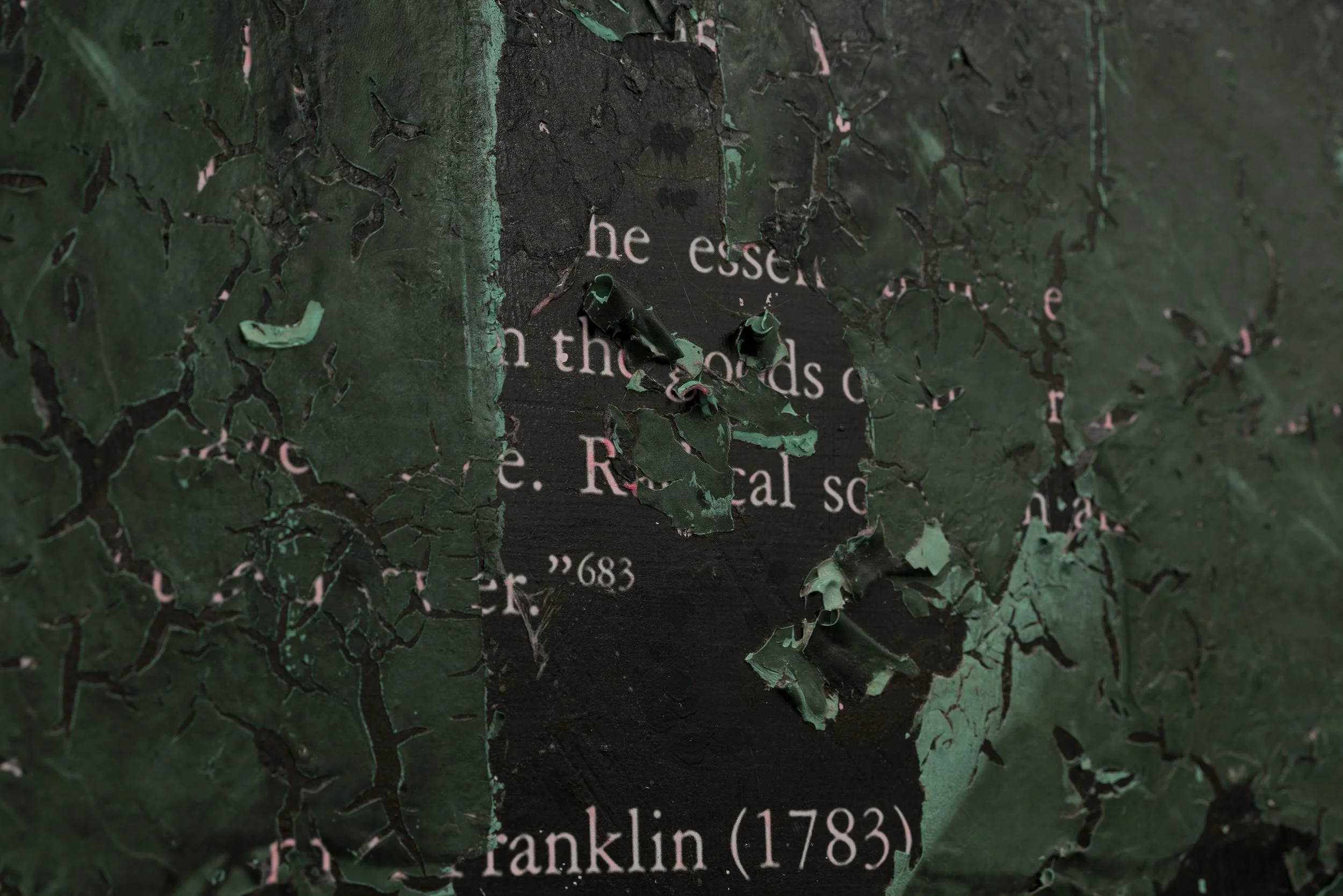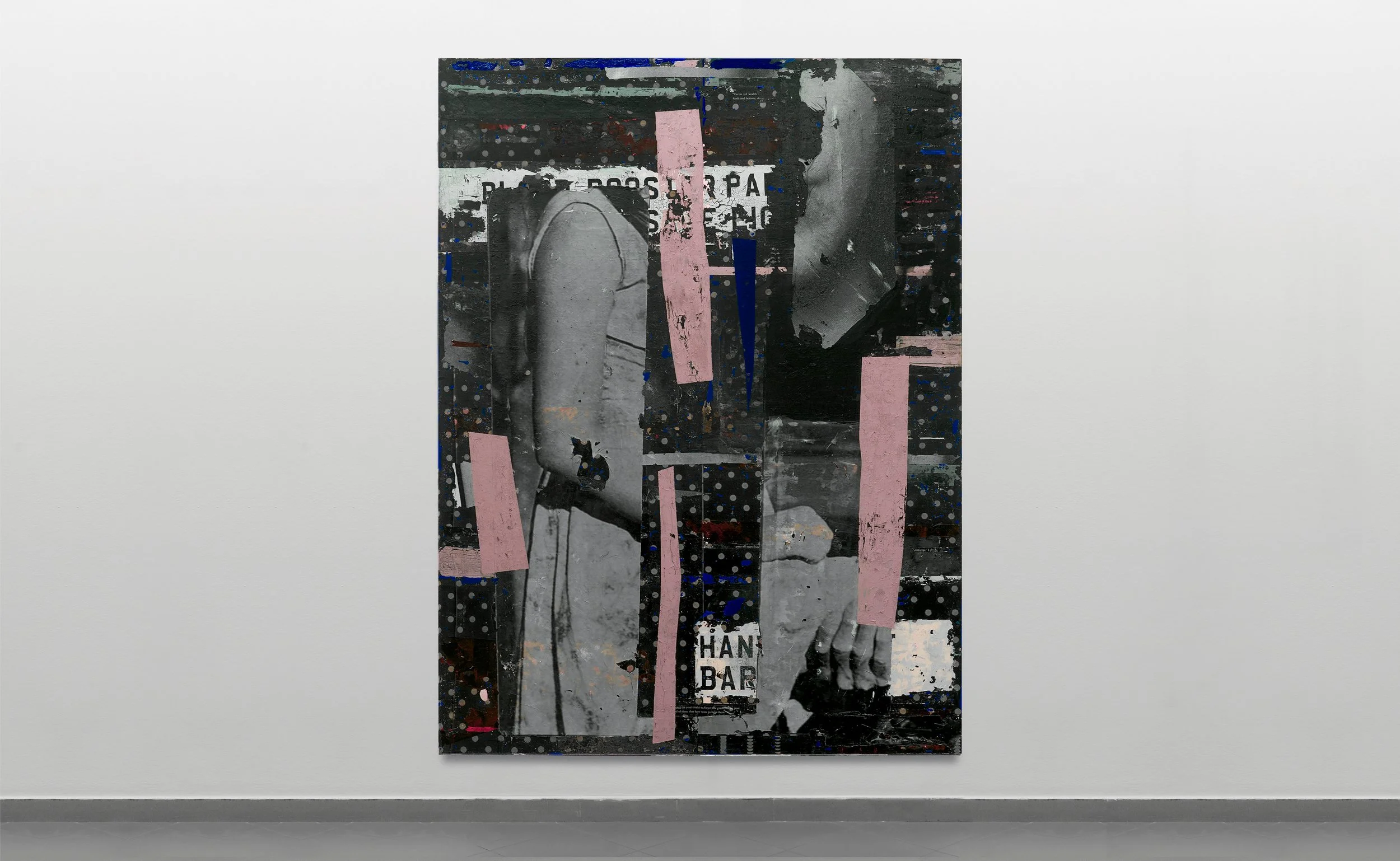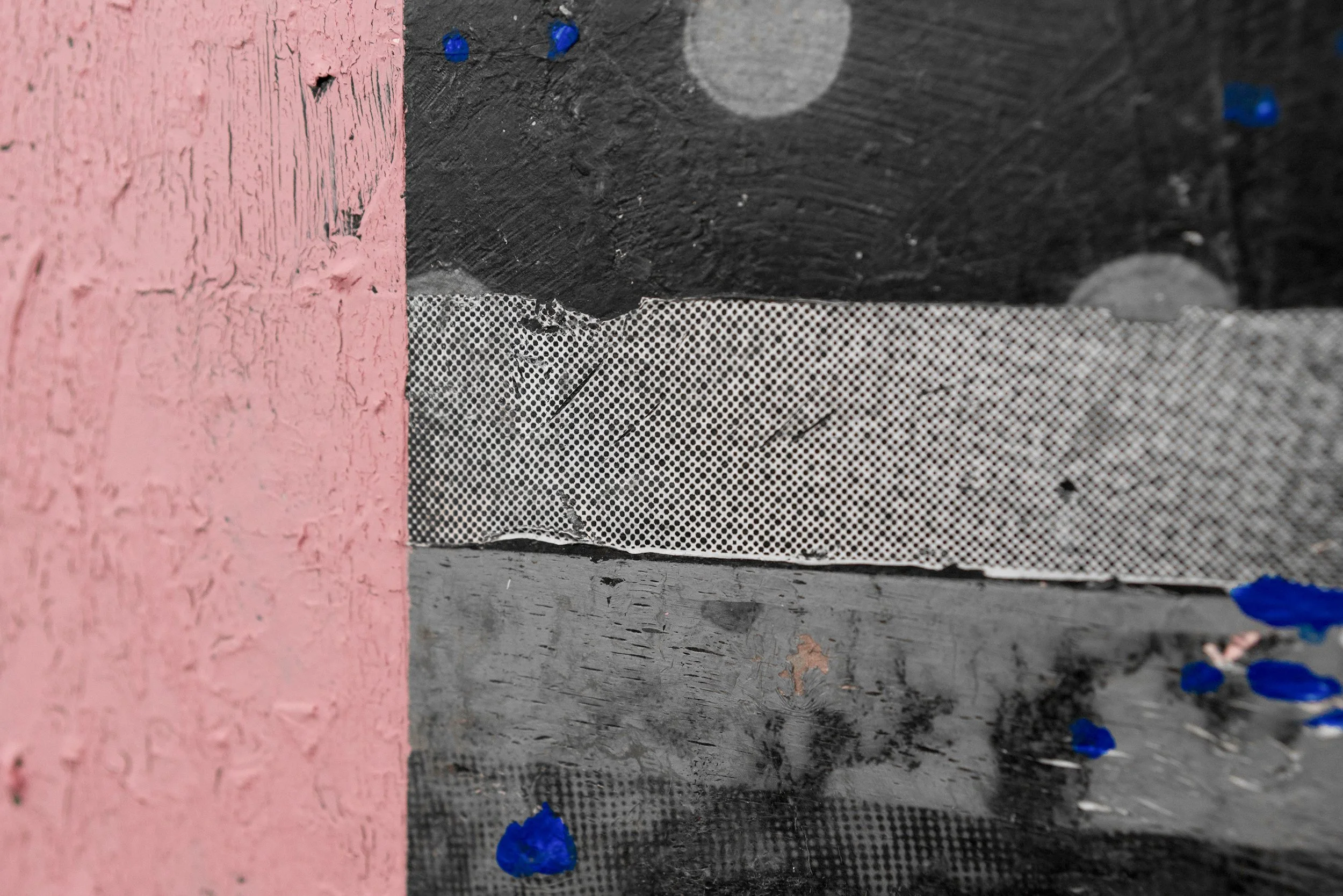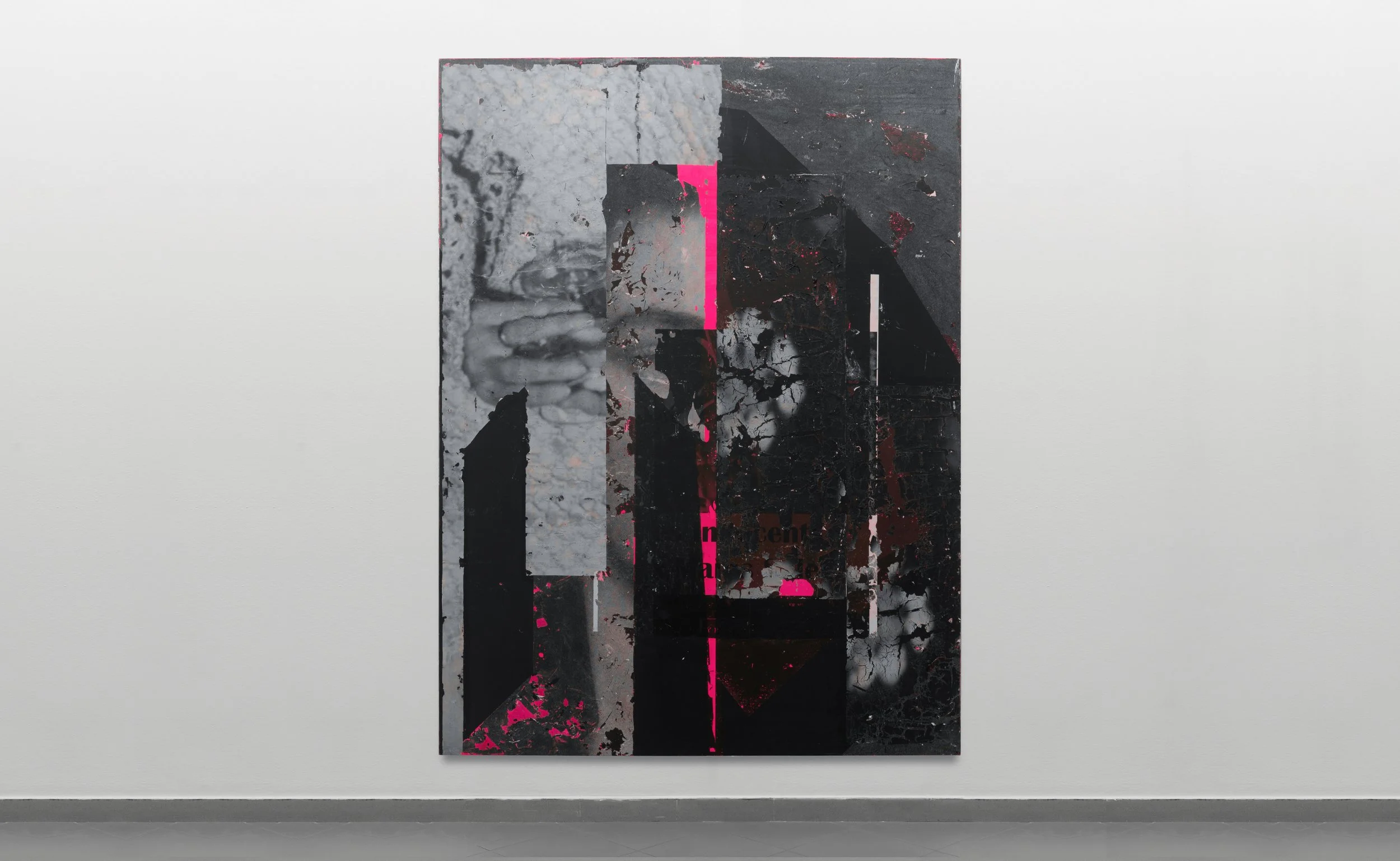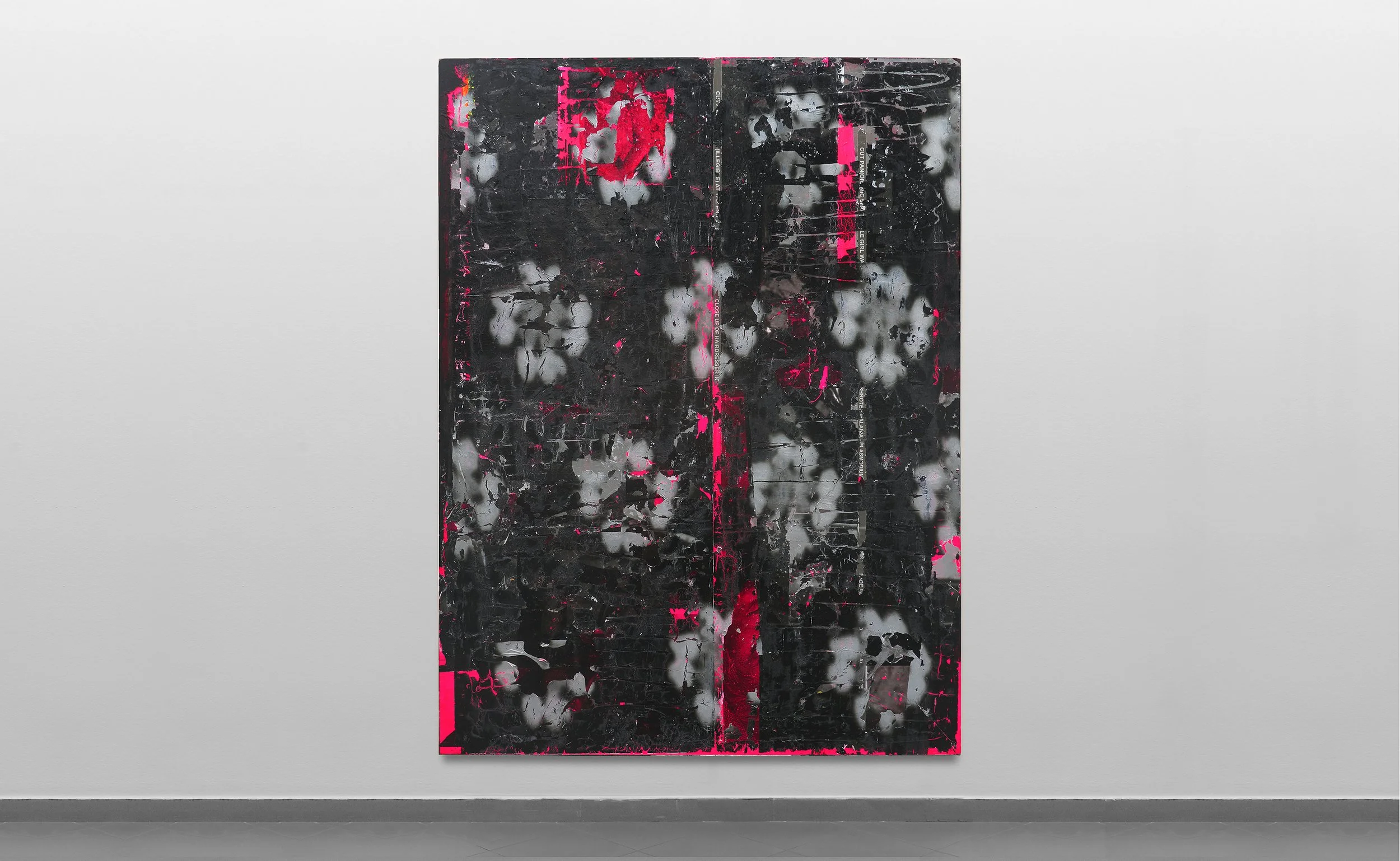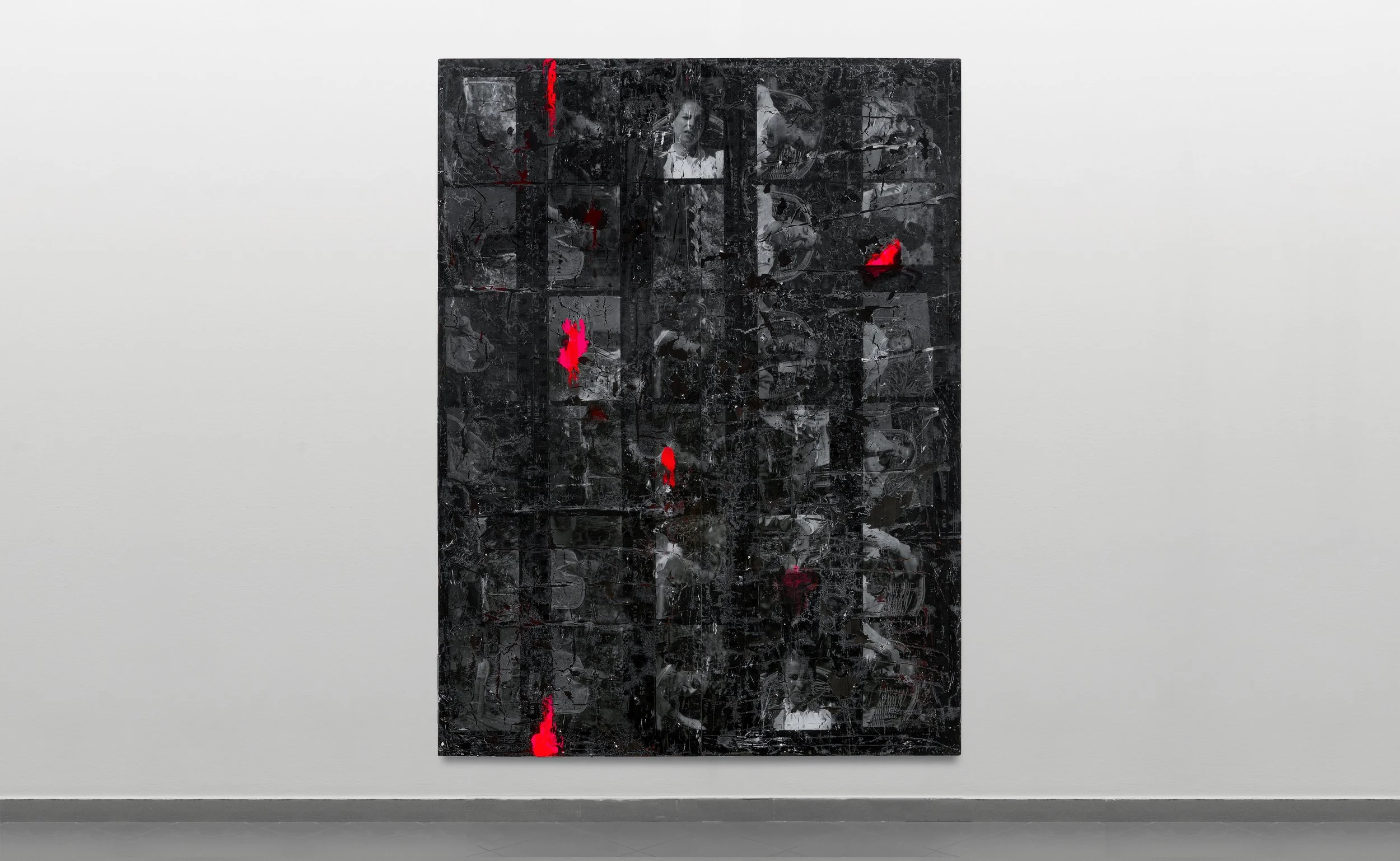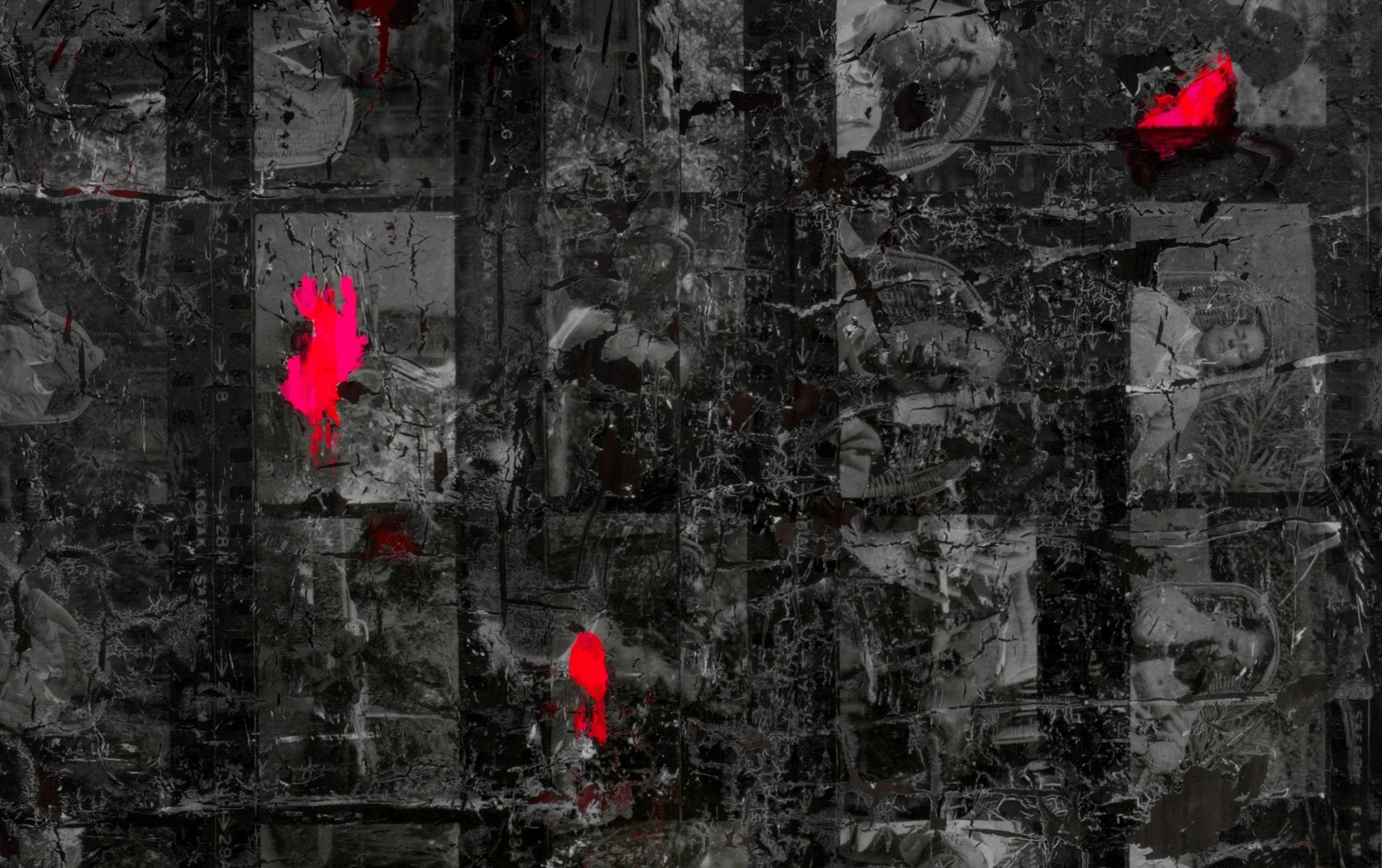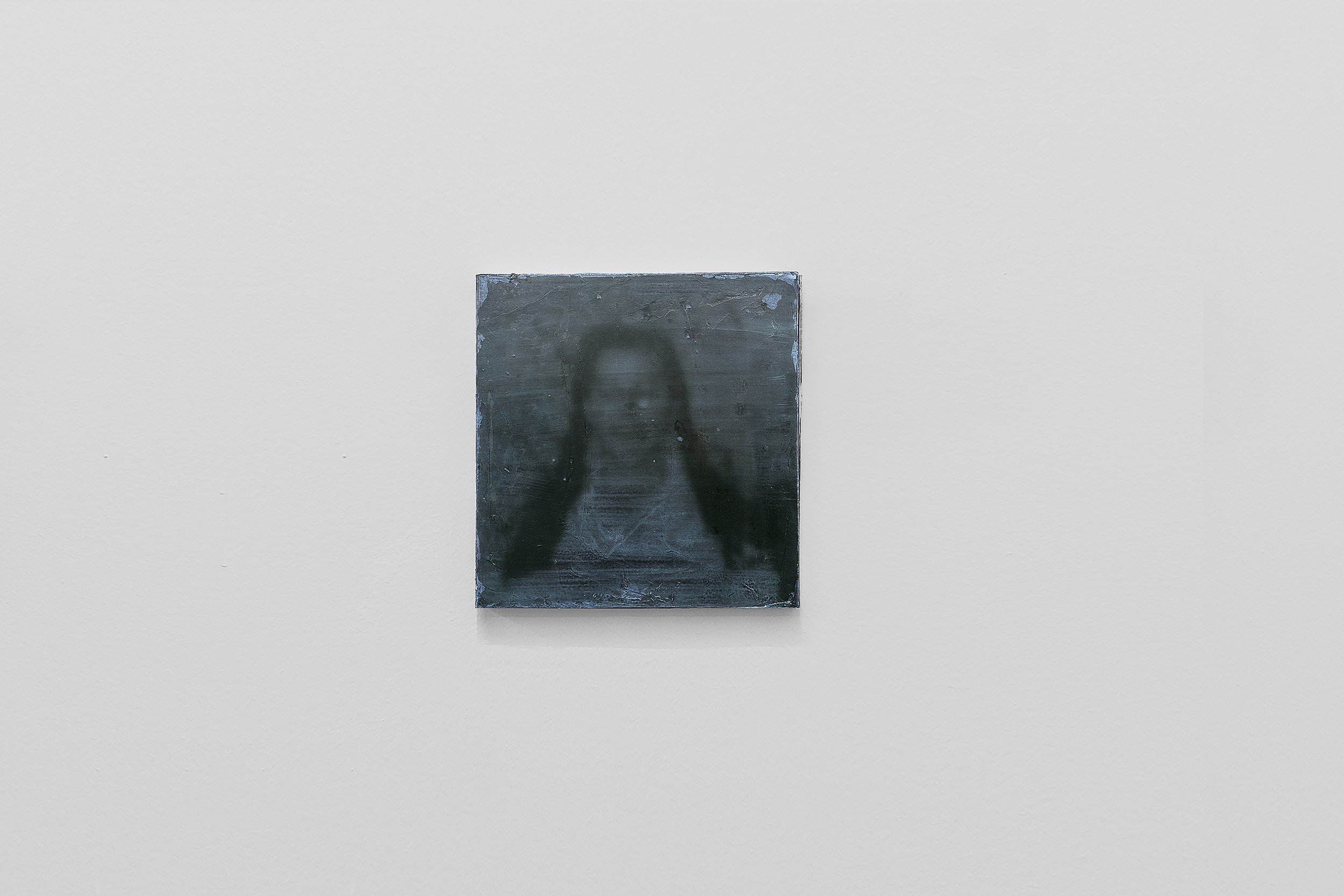City of Women
Museo Nacional de Bellas Artes
Santiago 2017
In Nicolás Franco's work, we witness a kind of critical recomposition of the original materiality of photography—this writing of light that has been liquidated by the standardized effects of its contemporary printing. Neither purely analog nor digital, this recomposition mediated by photographic film occurs in the alternative realm of painting. Specifically, within the large-format canvas, which projects the historic painting updated in its most conspicuous condition as a field of explorations for the eye and gaze.
Edited fragments of words, printed photographs, or frames act as unexpected and disjointed returns of a black-and-white visual memory, forming the grand plane of the canvas through montage, almost sculpted by the accumulation of successive layers of adhesion. A rough, discontinuous adhesion, not foreign to multiple tears and regrets, constitutes the main resource of this mediated painting, ultra-technified and, in a certain sense, also automatic.
In "City of Women"—a series that perhaps evokes the most fantastical film of Fellini—the fragmented body of the woman and the lost body of the image achieved through the work of light become winks of identity, functioning as problematic zones in abstract compositions, eroded by unfinished texts or ruined "fields of color." The tragic face of Romy Schneider, the drastic framing of the artist’s mother’s arm on her wedding day, or the cliché poses of European erotic cinema from the '60s emerge as true visual events among the crackled surfaces and crusts of the painting. They do so like the shadow of a visual experience lodged, like a caress or a blow, not in the conscious memory of the contemporary eye but in its skin.
The pictorial effect thickens the visual presence of the old, originally analog photographs and frames, whose fragments are present there by virtue of the emotional tear left by their early exposure to the artist’s gaze. Safeguarded from any rapid digestion, these superimposed fragments form a visual riddle. If we get closer, they acquire a three-dimensional thickness (due to the paint that Franco has carefully placed “under” the photographic film before adhering it), or they disassemble into a stream of dots that denounce the unmistakable passage of the image through the usual printing processes. Conversely, if we take a step back, these fragments sink and integrate as painting events within an abstract composition, which Nicolás Franco’s work achieves in large part thanks to the metal strips that abruptly enter the most superficial plane, bringing old avant-garde resonances and isolated textual messages that resonate as a tribute to the greatest conquest that visual intelligence achieved in the 20th century: montage.
City Of Women (2017)
Pigment ink, acrylic and oil on linen
260 x 195 cm (each)
INstallation views, Museo Nacional de Bellas Artes de Santiago 2017
